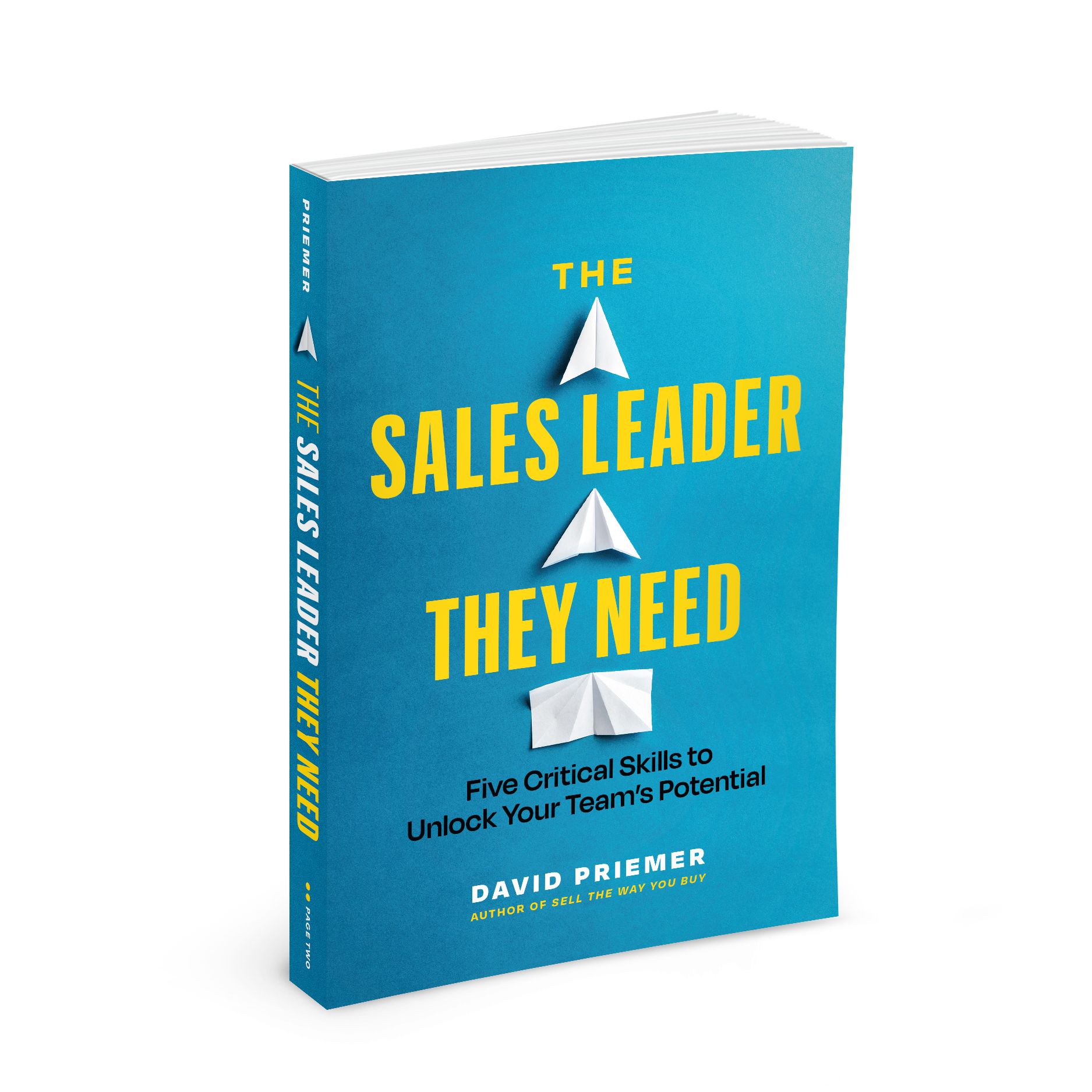The Hidden Force Accidentally Driving Your Prospects Away
You’re walking around the mall when something you remembered you wanted to buy catches your eye in a store window. You have a few extra minutes so you decide to head in to check it out. As you walk through the entrance you notice a salesperson casually lurking in the corner of the room. You decide to ignore them. But as you begin to thumb through the merchandise you notice they’ve left their post and are making a b-line straight for you. The hairs on your neck begin to stand on edge as you become aware of the polite yet decidedly uncomfortable confrontation that’s about to take place. Three seconds later the moment is upon you.
“Is there something I can help you find?”
“Un, no…I’m ok…I’m just looking”
“No problem. I’ll be right over there if you need me!”
“Don’t worry”, you think to yourself. “I won’t.”
What is it about salespeople, even ones that appear nice and friendly, that makes us automatically resistant to their attempts to help us? Well, as it turns out, it’s a well-understood psychological principle known as reactance. And you might be triggering this negative emotion in the minds of your customers without even realizing it!
Reactance is the feeling of resistance brought about by a perceived elimination of behavioral freedom. For example, have you ever walked by a sign that read “Wet Paint” taped to a freshly glistening wall? What do you immediately want to do? Touch it of course! Or how about a sign on a perfectly manicured lawn that says “Don’t walk on the grass”? You, of course, want to feel the plush sensation of the freshly cut grass on your feet!

When we feel someone or something is limiting our freedom to choose, we lash out. We resist and immediately want to take the prohibited action in order to assert our independence. And in the case of modern buyers, if they feel a pushy, self-interested salesperson is pressuring them to buy something in even the slightest of ways, the 6-inch steel-reinforced walls will come up, making it nearly impossible to connect with them.
You Might be Using these Offensive Techniques More Than You Think
Unfortunately, for years salespeople have been taught to incorporate the very tactics that trigger reactance into their sales motion. In fact, these approaches are often referred to as “closing techniques” because they are designed to catalyze decisions for customers to move forward with or purchase your product or service.
For example, have you ever been on the buying side of a purchase and had the sales rep ask you if “there was any reason why you wouldn’t be able to make a purchasing decision on this product today?”. Chances are, even if you had contemplated making a purchase, the feeling of being boxed-in would have been off-putting and made you respond with something like “Ah, I’m still not sure. I might need to think about it a bit more”. And then, how would you feel if the salesperson responded to your last comment with a statement like “That’s fine…but we only have one of these left in the size/color/specification you wanted so I’m afraid if you don’t move on it now, it may not be here when you come back”? Chances are you’d politely excuse yourself and take your business elsewhere.
Even seemingly minor tactics can easily trigger reactance. For example, have you ever received a cold outreach from a salesperson that ended with “…so, I’d love to talk to you about how we can help. I’m free on Wednesday at 2:30 PM. Will that work for you?” While the seller might think they are making their request easier for the buyer to comply with by removing the agony of meeting time choice, it’s often the opposite. The feeling of a simple meeting date and time being imposed on a buyer produces the same off-putting effect.

Modern buyers live in a world full of seemingly infinite choices and a highly evolved virtual purchasing experience. They have become more accustomed to having great power, knowledge, and freedom in the buying process. In fact, more and more purchase decisions are being made on the basis of that experience as much as they are on the solution itself. At the same time, most modern sellers remain saddled with the revenue, quota, and time-pressure burdens of our historical ancestors. And when we impose these burdens on modern buyers the experience quickly erodes along with our pipeline.
A Simple Approach for Supercharging Your Close
The good news is that supercharging your sales motion by circumventing the reactance trigger may be simpler than you think. That is if reactance is catalyzed by a perceived restriction of freedom and choice, then restoring that sense of choice should neutralize the negative implications of the tactic.
In an effort to explore the reactance phenomenon, French behavioral scientists Nicolas Guéguen and Alexandre Pascual conducted an experiment. They had their assistants randomly stop passers-by in a popular mall on a sunny spring day and ask them if they had some extra coins for bus fare. In one set of experiments, the assistants simply asked the subjects for the money. In a second set, the assistants made the same request but appended it with a phrase indicating that the subject was completely free to accept or refuse. The results were staggering. In the first instance, compliance with the request for bus fare was 10%. In the second instance, the rate of compliance rose to 47.5. An almost 5X increase! Why? By establishing that the subject was completely free to refuse the request, the reactance response wasn’t triggered and they became more likely to comply with it.
So how can you leverage this approach in your selling motion? Here are some examples of how you can combine your request with a reactance “safety valve”.
…in an email
Bad: “Let’s talk. I’m free on Wednesday at 2:30PM. Will that work for you?”
Good: “If you feel a quick, no-pressure conversation makes sense, here’s a link to my calendar. Feel free to pick a time that works best for you”
Note: data from the team at Gong backs this up! In a study of 304,174 emails, an interest-based call-to-action (e.g. an ask if the customer was interested in learning more after highlighting the value) led to 2X more success in booking a meeting than a specific CTA (e.g. “does Wednesday at 2:30PM work for you?”)
…at the end of a call or meeting
Bad: “Is there any reason why you wouldn’t be able to make a purchasing decision on this product today?”
Good: “It sounds like we have a good fit here, and if you’re interested in moving forward today, I’d love to help…but if you need more time to think about it, that’s completely fine too.”
…at the outset of a discovery meeting
Bad: “After our initial discovery call today, I’d like to schedule a meeting with your executive team”
Good: “I appreciate you taking the time to chat today. If the call goes well, most clients find a meeting with your executive team to be a helpful next step but we can decide on that once we get there. And if for some reason we feel it doesn’t make sense to move forward, that’s ok too. I’d still be happy to share a package of free resources to help you on your way.”
To be clear, I’m not suggesting modern sellers “go soft” or refrain from instilling a sense of urgency in their customers. After all, inertia, status quo bias, and the dreaded “do nothing” option all have very strong gravitational pulls and ultimately result in the customer making a decision that may ultimately not be in their best interest. What I am suggesting is that we become more mindful of how our approach can inadvertently trigger a negative response in the minds of our customers, putting undue strain and tension on a relationship typically plagued by trust issues.
So the next time your customer seems put off by your approach or doesn’t seem interested in the plan you’ve laid out, ask yourself if you’ve inadvertently triggered their sense of reactance by limiting their freedom and choice. Chances are a small tweak to your selling motion is all it will take to ensure your customers remain engaged and aligned.
HERE’S A BONUS VIDEO ILLUSTRATING THIS CONCEPT
We promise never to send you junk or share your email! Just helpful sales insights.














Leave a Reply
Want to join the discussion?Feel free to contribute!